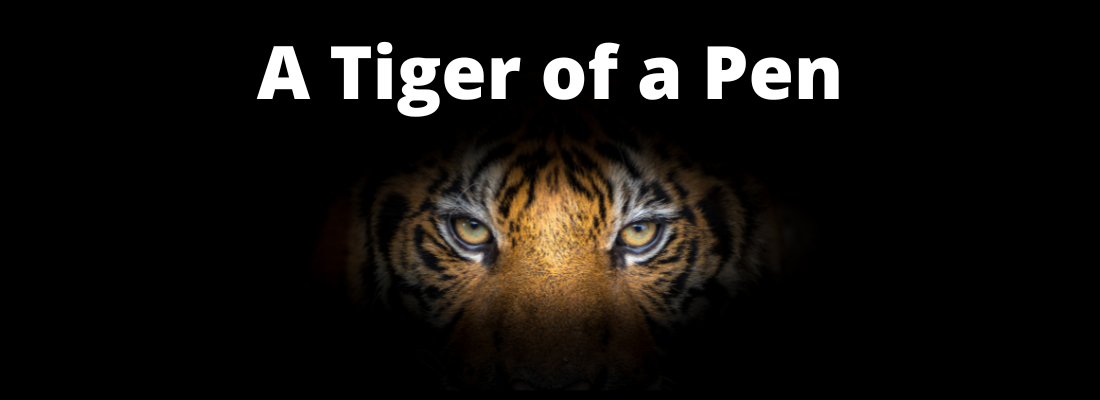Danitrio’s largest fountain pen line is the Yokozuna. It takes its name from the highest rank a sumo wrestler can achieve. The term means “horizontal rope” which is derived from the rope that is worn around the wrestler’s waist.
Obviously, sumo wrestlers are large people. It makes sense that Danitrio would name their largest pen style after sumo. You can imagine a yokozuna writing with large pens.

A pen fit for a yokozuna is the Danitrio’s Tora-zu Tiger Maki-e. As a wide diameter pen, it allows for a large urushi canvas. You can fit a lot of amazing art into a pen when it’s this big. The main focus is the tiger on the barrel of the pen, while trees and flowers adorn the cap.

Tora-zu is inspired by an Edo period painting by Ito Jakuchu (1716-1800). Ito was a renowned painter who usually drew from nature and his own experiences. He often painted chickens and other common farm animals, but sometimes experimented with exotic animals like tigers and phoenixes.
Many of Ito’s works can be seen in museums around the world. If you’re not near a museum, you can view many of Ito’s paintings online. Here’s the original painting:

This work was an attempt to paint something he’d never seen in life, as there are no tigers in Japan. What he knew of them mainly came from Chinese paintings, and tiger pelts. The writing in the top-right corner says, in part, “I have imitated the painting of (the Chinese Southern Song artist) Mao Yi.”

Ito did his best, and it is truly a work of art. One wonders how much of the styling is intentional, and whether he meant to paint a slightly distorted look to the tiger. Its ears are quite small, smaller than in reality. And the eyes appear larger than life. The overall effect is playful and a bit cartoonish. It looks more like an oversized house cat rather than a fierce predator.

In Japan, tigers are seen as guardians against demons and evil spirits. They are often paired with dragons. Dragons rule the wind, and tigers rule the rain. Together, “they were revered as rulers of the cosmos and the natural world.” (The National Gallery of Art)

The tiger is also the third symbol in the Japanese zodiac. According to JapaneseZodiac.com, “Tigers are proud, courageous, and generous. Being decisive and quick-witted, they are potentially great leaders. On the negative side, they do not like to follow orders, and can cause interpersonal friction with others.” 2022 happens to be a Tiger year. Whether or not you believe in horoscopes, it can be fun to discover your sign in the Japanese zodiac.

Masayuki Hariya (artisan name: Yuhaku) hand-painted this pen. Yuhaku is a master of traditional Japanese crafts. He performs maki-e on natsume (tea containers), jewelry, and fine writing instruments. His wife is also a maki-e artisan.
You can explore more of Yuhaku’s creations on our website, or view the full collection.
References
“Japanese Year of the Tiger,” Japanese Zodiac.
“The Twelve Zodiac Animals,” National Gallery of Art.
“Tigers Sprang from the Artist's Imagination,” Bowers Museum.

